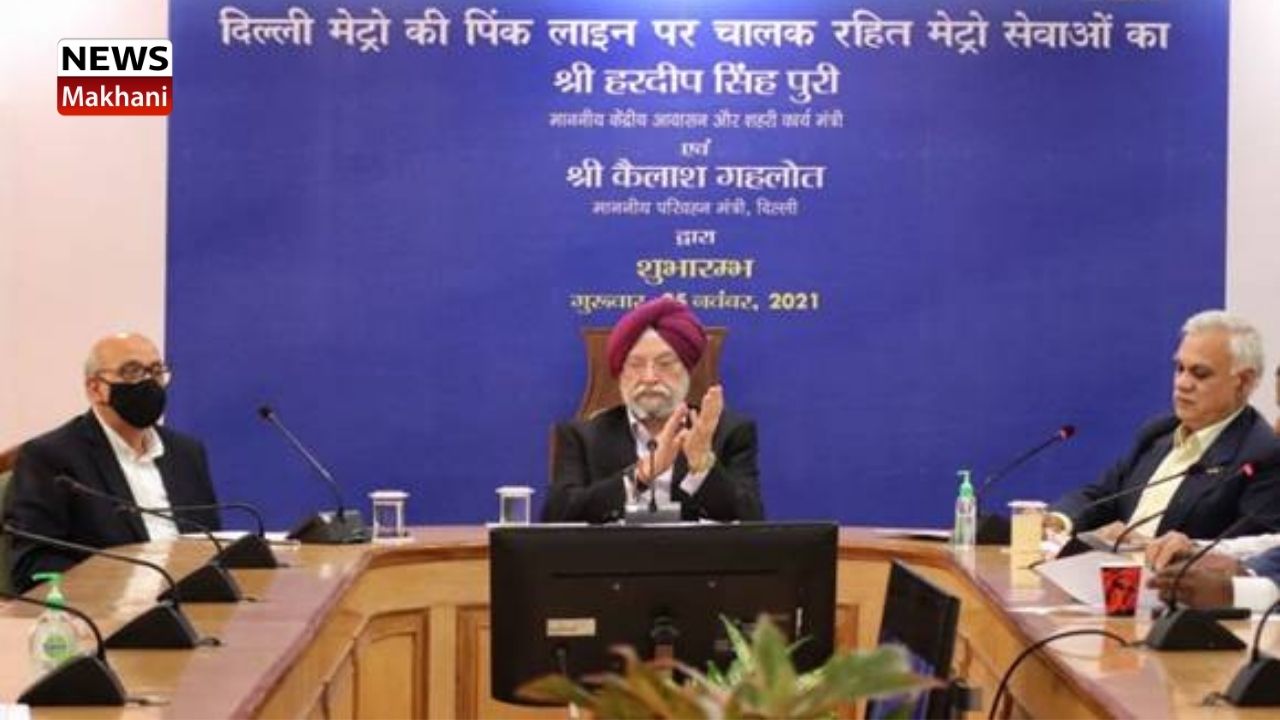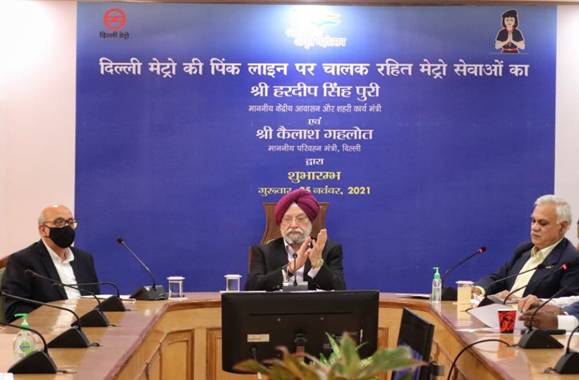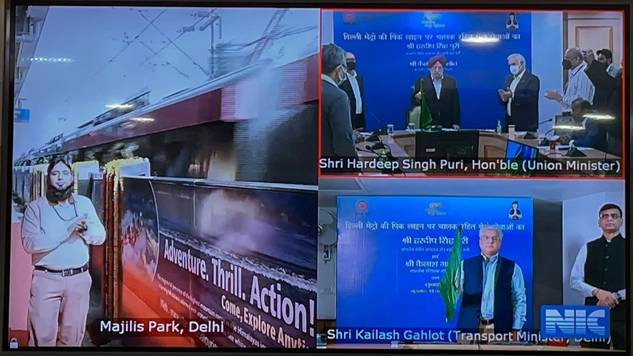
Delhi Metro has now become the fourth largest network in the world to operate with driverless technology
Union Minister of Housing and Urban Affairs Shri Hardeep S. Puri alongwith Transport Minister for the Government of National Capital Territory of Delhi, Shri Kailash Gahlot todayvirtually inauguratedthe Unattended Train Operations (UTO) on the Pink Line of the Delhi Metro.Secretary, Ministry of Housing and Urban Affairs, Shri Durga Shanker Mishra andDr. Mangu Singh, MD, Delhi Metro Rail Corporation were also present on the occasion.

Addressing on the occasion, Shri Puri said that we are witnessing another historic occasion where we will see the Delhi Metro become one of the largest driverless metro networks in the world. The honourable Prime Minister, Shri Narendra Modi launched the first driverless train operations of the Delhi Metro in December 2020, when he flagged off the Magenta Line’s driverless operations, and in the next 11 months, we are adding 59 km stretch of driverless operations. Congratulating the Delhi metro and people of NCR, the minister said that Delhi Metro has given us yet another proud moment in the country’s journey towards affordable, inclusive and sustainable public transportation. It has emerged as asymbol of the technological prowess that our country possesses.It is the backbone for socio-economic connectivity in the region, and plays an invaluable part in the everyday urban experience of Delhiites and other commuters.

Shri Puri said that with a massive driverless network of 96.7 kilometres, the Delhi Metro has now become the fourthlargest network in the world to operate with driverless technology.This is a momentous occasion not only for DMRC, but also for the entire country. It is another reminder of this Government’s focus on rejuvenating our urban areas and improving the quality of life of our citizens. He said that Delhi Metro has peak passenger load of 65 lakhs per day in the pre-covid times, and soon we will surpass that figure. He said that increase in metro ridership is reducing the load of vehicles on the road, helping in reducing pollution as well as congestion.
Secretary, MoHUA, Shri Durga Shanker Mishra said that this is an important metro line which connects north to south Delhi. He said that with this driverless technology, passengers will have a safe ride; operations will be streamlined; our drivers will not have to wake up early to start metro operations. He said that with the implementation of this new technology, metro can be run by the click of a button.
Driverless Train Operations (DTO)
Driverless Train Operations (DTO) has been launched on the 59 kilometre long Pink Line (Majlis Park to Shiv Vihar) of Delhi Metro. With this, the Delhi Metro’s fully automated network will grow to about 97 kilometres, which is 4th largest in the world and the only DTO network in India. The DTO facility was launched on the Magenta Line in 2020 with which the Delhi Metro had entered the elite league of world’s 7% Metros in the world which operate fully automated metro networks.
The Driverless Train Operation will bring more flexibility in train operations, reduce human interventions and human errors. It will also help in improving the availability of coaches for service. The Driverless Trains will eliminate the manual process of checking done before induction, subsequently reducing burden on train operators. The parking on stabling line in depots will also be done automatically.
The DMRC has already started reaping benefits of driverless operations on its Magenta Line in terms of increased availability of coaches for service. Reliability of the trains has increased manifold due to exhaustive self-tests done before induction in service everyday automatically, eliminating all possibilities of human error. The benefits will further increase with a longer network under driverless train operation.
In DTO, initially, the train operator will be present in the train to instil a sense of confidence and assistance. DTO’s higher level of diagnostic features will help move from conventional time-based Maintenance to Condition Based Maintenance. This will also reduce maintenance down time of trains.

 हिंदी
हिंदी





